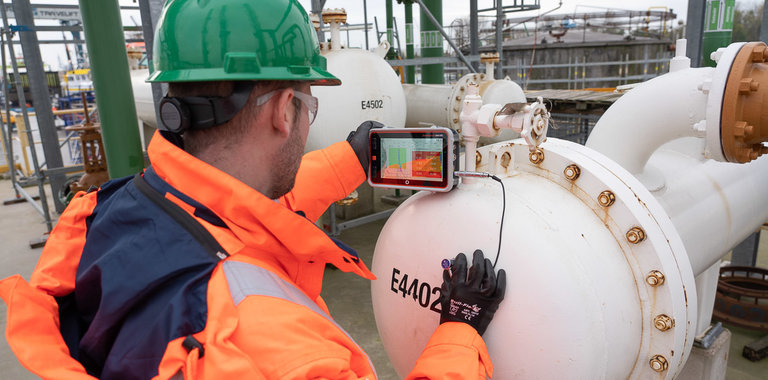
Checking the Characteristics of Ultrasonic Probes
The acoustical properties of probes can change. If a probe is needed which has certain properties or if the resistance to ageing of the probe has to be checked then simply trusting the data on the designation plate is by no means enough, the properties must be checked. Hereby the following decisive pre-requirements apply:
Probes may only be measured under the conditions for which they were designed by the manufacturer: For example direct steel contact probes only with a direct contact to steel, immersion type probes only with a water delay
The probes and the equipment i. e. the testing system, are always to be checked as a unit.
Data from the sound field (sound beam) should be measured with the least acoustical and electrical correction i. e. if possible without filtering the signals by large reflectors, without small band amplifier or using other means of signal cosmetics. In testing practice the main parameters which have to be checked are:
Testing sensitivity
To check the sensitivity reference blocks are used with a large reflecting wall. The attenuation in the reference block should be very small. Great care is to be taken with high frequencies when broad band pulses and broad-band amrilltiers are involved because the filtering effect of an attenuation reference block cannot be seen from the shape of the signal (the echo amplitude remains almost constant although the reflected pulse only contains the lower frequencies. So one measures the test sensitivity for a "lower" test frequency than was assumed). With special transducer material particular attention has to be paid to see that the echo amplitudes do not become too high. If the amplifier is overdriven or if the wave propagation is nonlinear in the reference block the measurement will be worthless.
Testing frequency
The same echo should be used to check the frequency and sensitivity. An exact determination of the frequency is only possible by using analysers. To speed this determination however one can, quite accurately, (with pulses which have more oscillations) count th( number of oscillations on screen of an adjusted oscilloscope. (Ultrasonic equipment with RF-indication enables a direct readin to be made from the screen). Instruments which have a selective amplifier enable very coarse estimations to be made as to whether the pulse embodie the nominal frequency. The frequency control is se in sequence in all the available frequency ranges. That range in which the highest echo amplitude occurs contains the main pulse frequency. This check, is very advantageous with highly attenuating materials (e. g. austenitics) in order to confirm whether there have been any frequency shifts if the pulse spectrum.
Resolving power
The "near resolution" describes the ability of testing equipment to detect reflectors which are very close to the surface. The "far resolution" is the ability of testing equipment to detect reflectors which lie close together at a greater distance from the probe. The resolving power depends upon the pulse length and therefore is always determined using the smallest pulse strength. The resolving power is measured by simulation with a suitable measuring pulse Instrument or approximately with suitable reference blocks (for direct contact, TR reference blocks, reference blocks for immersion technique).

